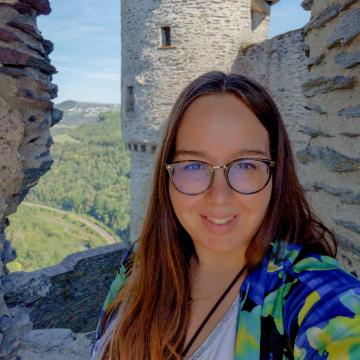
Marion - Chroniques d'une ardennaise
Member for 4 years
100% Ardennes, between Belgium and France
I DISCOVERED THE ARDENNES BY FOLLOWING THE SLATE ROUTE
A 440 Km journey - A world Deep down underground
If you had to pick one single rock to serve as symbol for the Ardennes, it would definitely have to be slate. Slate can be found in the Belgian, French and Luxemburg Ardennes. For centuries, the extraction of this mineral was part of the very fabric of life in the Ardennes. Traces of this rich heritage can still be witnessed all over the Ardennes.
From Alle-sur-Semois …
There are 5 waypoints in the Slate Route; the route crosses the entire width of the Ardennes from Haut-Martelange in Luxemburg to Rimogne in the French Ardennes. My journey starts in Alle-sur-Semois, and I will be visiting three key sites.
In Ardois’Alle (‘Ardoise’ is French for slate) you can visit two mines. One of them is still a working mine, on the surface, where slate waste is processed and then used for flooring or roofing. The other mine, which was closed down in 1948 houses a warren of tunnels that stretches out over hundreds of meters and…a large population of bats! Here, you can discover how several generations of miners lived as well as the evolution of slate mining techniques over the years. There is a small museum on site, where you can gain a better insight into the miners’ everyday life, the tools they used and the whole process of slate manufacturing as we know it. In the mines, the slate is extracted in huge slabs that can weigh more than 200 kg. In times gone by, the miners used to carry them through the tunnels on their back. Once on the surface, the slate is cleaved in half, and then it is cleaved in half again and again until sheets that are 3-4 millimetres thick are obtained. The sheets are then cut in all kinds of shapes and sizes, depending on what they are going to be used for.It’s a painstaking process that requires meticulous and precise workmanship.It’s a painstaking process that requires meticulous and precise workmanship.
A mysterious universe is hiding beneath our feet!
…to Bertrix
After all these interesting discoveries I’m in the mood for some food, so when I have arrived in Bertrix, my second waypoint on the Slate Route, I decide to stop in a brasserie for a bite to eat. I enjoy a miner’s omelette served straight in the frying pan, accompanied by a Morépire, a local craft beer. I partake with moderation, as I need to be ready to descend twenty-five meters into the depths of the mine galleries.
In the Bertrix slate mine, slate is extracted from several different levels, twenty-five, forty-five and sixty meters deep. During our visit, our journey to the centre of the Earth will "only" take us twenty-five meters underground. That being said, it’s definitely deep enough for me!
It’s time to go. Equipped with a hard hat and a headlamp, I start off on my slow descent into the bowels of the Earth. From the surface, it is impossible to imagine the mysterious world lying beneath our feet. Once we’ve gone down the interminably long iron stairs, I enjoy meandering through the maze-like network of tunnels. It’s pitch dark down there, at times it feels as if the rock is bearing down on me, the passage is so narrow I can hardly thread my way through and then, suddenly, the tunnel opens up unto gigantic chambers the size of cathedrals. It is a spectacle that is both striking and awe-inspiring. Surrounded by silence I tried to picture the clamour the slate workers had to put up with all day long. And if want to experience the real thing, all I need to do is push the button right next me, and I will get a taste of the perpetual racket in which the mine workers performed their work. Ouch! I’m really glad when the hellish din is over. Once things have gone quiet again, I take a look at the reconstructed scenes of men pushing heavy carts, carrying heavy blocks of slate on their shoulders, climbing up ladders with their heavy load. Now it’s time for me to climb up the very same ladder and go back up towards the surface. I must confess I’m happy to see the light of day again, breathe in some fresh air and listen to the sounds of nature…Off I go towards Rimogne, my last stop, while enjoying the memories of this unique experience.
The sunlight reflecting on the slate invests the villages with a dreamlike quality...
And then Rimogne...
In Rimogne, slate is part and parcel of village life, more than that; it's a way of life and a source of pride for the villagers. I head for the House of Slate a museum that has taken up residence in the buildings of the power plant that formerly powered the Rimogne slate mine. Here I will learn more about the history of the village’s slate mine, which was closed down in 1971. In its heyday, it was one of the biggest slate mines in France, and the miners would go as deep as 120 meters underground to mine the famed slate. I continue my tour, enjoying an immersive and interactive visit that immerses me in the slate miners’ everyday life.
As I leave the museum, floor markings take me on a journey of discovery through the village. Countless vestiges of the slate mining activity are dotted across the village streets. I am quite impressed by a remarkable structure that towers several meters above the village centre. This is known as the Puits-Saint-Quentin pithead (puits’ is French for mine shaft). This iconic landmark is in fact a lift with a winding-gear on top which transported the slate miners down the mine shaft, 120 meters under the ground. Nowadays, this massive construction is the symbol of Rimogne. A park with a play area for children, sculptures and portraits of slate miners now surrounds the pithead. I wander through the village streets and admire the typical old houses the slate miners used to live in, the huge “verdous” (local dialect for the slagheaps of slate mining waste) or even a retaining wall entirely built with slate.
On my way back, I start looking closely at my surroundings, and I notice that slate is everywhere you look in the Ardennes, on the roofs for instance. I watch the sunlight reflecting on the slates and work its magic; the roofs turn turquoise, emerald green and occasionally bright pink…making some villages look as if they belong in a fairy tale...
Enjoy this experience
The Slate Route
Discover the history of slate in the Ardennes, from Rimogne to Haut-Martelange
www.routedelardoise.com
I visited:
La Maison de l’Ardoise (The House of Slate)
95 rue Jean-Baptiste Clément, 08150 Rimogne, France
Tel : +33(0)324 35 13 14
www.village-ardoise-rimogne.fr
maisondelardoise@mairie-rimogne.fr
Ardois’Alle
12 Rue de Reposseau,5550 Alle-sur-Semois, Belgium
Tel : +32(0)497 45 43 74
www.ardoisalle.be
ardoisalle@skynet.be
Au cœur de l’Ardoise - The Bertrix slate mine
Rue du Babinay, 1 6880 Bertix, Belgium
Tel : +32(0)61 41 45 21
www.aucoeurdelardoise.be
info@aucoeurdelardoise.be
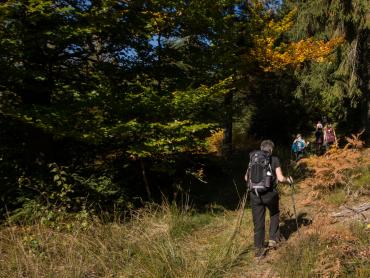
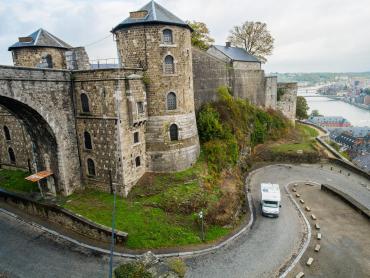
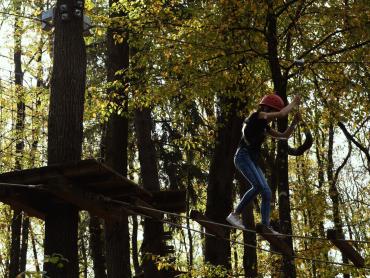
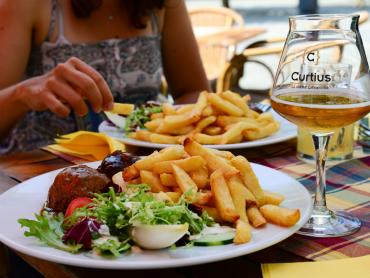
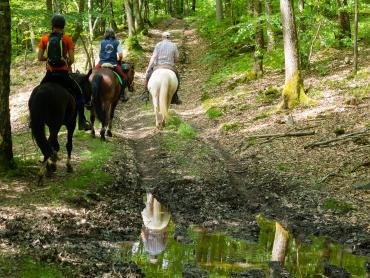
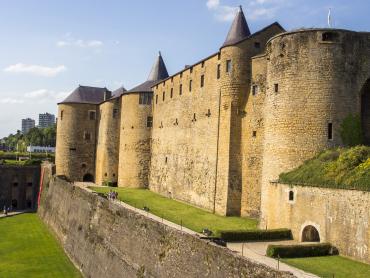
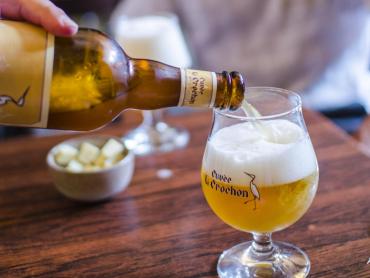
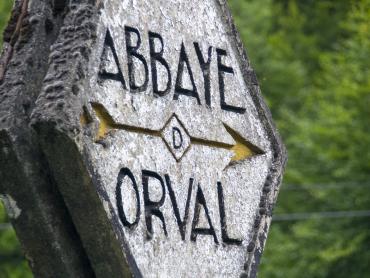
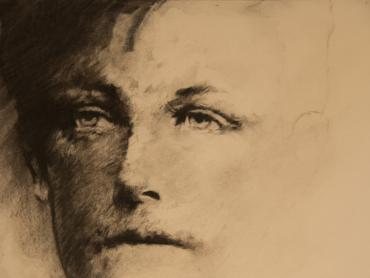


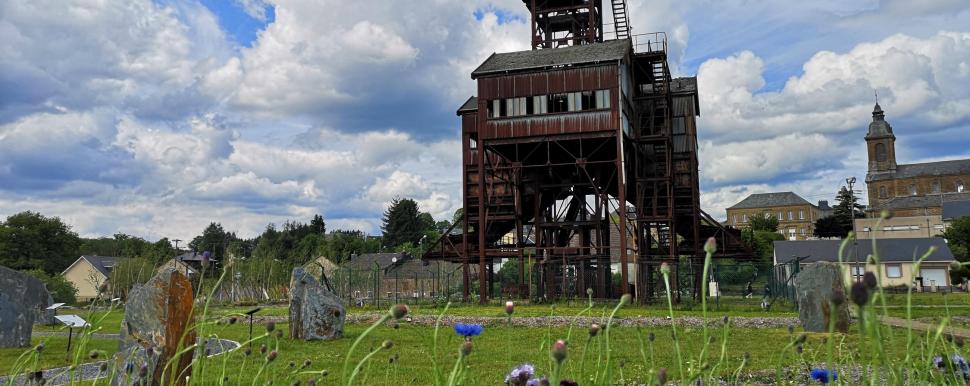
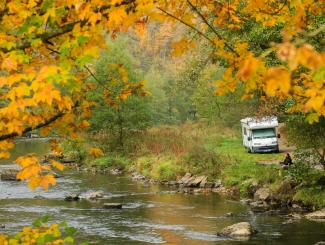
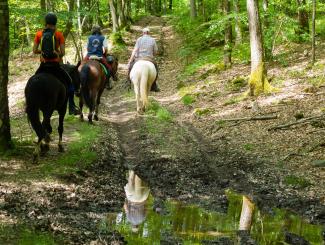
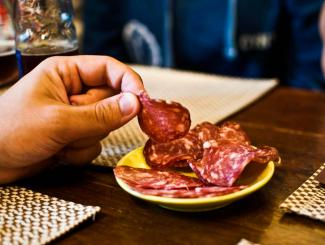
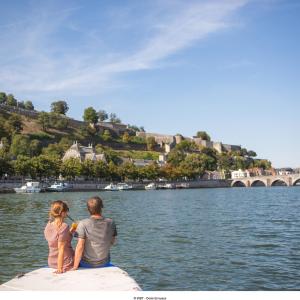




A journey to the centre of the Earth